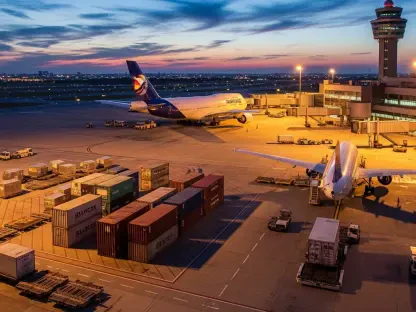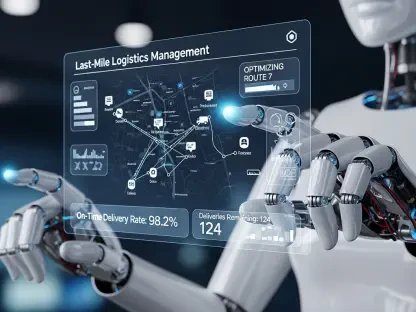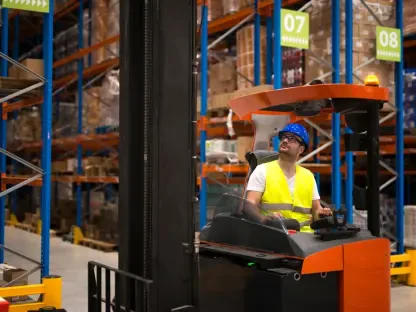The last-mile delivery sector is at a crucial juncture, with the debate intensifying between the proponents of full automation and those advocating for a blend of human and AI collaboration. Brian Moroney, CEO of Drivosity, argues for a more sophisticated approach that merges human intuition with AI efficiencies to achieve optimal results. This exploration into the potential of Human-AI Collaborative Networks (HACNs) and their impact on last-mile delivery reveals a compelling case for harmonizing human and machine intelligence.
The Allure of Full Automation
The promise of autonomous vehicles and drones has captivated the last-mile delivery industry, drawing substantial interest and investment. Advocates for full automation highlight several key benefits, including significant cost efficiency. Autonomous vehicles, devoid of the need for rest breaks or holidays, can operate 24/7, drastically reducing labor costs. Furthermore, the consistency they offer is unmatched; machines aren’t susceptible to fatigue, distractions, or emotional fluctuations, ensuring uniform performance levels that can be challenging to achieve with human workers.
Safety is another critical argument made for full automation. Removing the possibility of human error is believed to reduce the occurrence of accidents, making roads and delivery processes safer. Scalability also presents a strong case for automation; these automated systems can be scaled up quickly and efficiently to meet peak demand periods without the complexities and costs associated with temporary hiring. While these arguments are compelling, they tend to overlook the unique capabilities humans bring to the process and underestimate the potential of human-AI collaboration.
The Power of Human-AI Collaborative Networks
Human-AI Collaborative Networks (HACNs) represent a groundbreaking approach where human drivers and AI systems work together as cohesive units. These networks facilitate continuous learning and adaptation, leveraging human intuition alongside AI’s analytical power to forge a more intelligent and efficient delivery system. In an HACN, drivers become instrumental nodes within a dynamic network, each driver-AI pair acting within a collective that shares real-time information and adapts strategies based on evolving conditions.
This setup allows for flexibility and responsiveness to rapidly changing environments—an advantage that standalone AI systems might lack due to their rigid programming. By integrating the richness of human experience and judgment within a high-tech framework, HACNs create a delivery system capable of outperforming either humans or AI when operating independently.
Real-Time Learning and Adaptation
A key benefit of HACNs is their extraordinary capacity for real-time learning and adaptation. For instance, consider a driver named Sarah who uses her local knowledge to override an AI-suggested route in downtown Chicago because she knows about a local festival causing congestion. The AI then learns from Sarah’s decision, which enhances its future recommendations. This ongoing learning process amplifies collective intelligence, making HACNs incredibly effective.
Solutions discovered by one driver-AI pair can be instantly disseminated across the network. For example, a new driver in Boston struggling with deliveries on a university campus can benefit immensely from AI leveraging the shared experiences of more seasoned drivers. This collective wisdom helps reduce initial learning curves and boosts productivity from day one, showcasing the practical benefits of HACNs.
Enhancing Customer Experience
HACNs also hold the transformative potential to revolutionize customer interaction. AI can analyze customer data to predict preferences and foresee potential issues, enabling drivers to deliver proactive and personalized services. Emily, a food delivery driver, benefits significantly from her AI assistant’s ability to predict a customer’s lunch schedule. This allows her to prioritize the order for optimal delivery timing, enhancing customer satisfaction and loyalty.
Moreover, HACNs can adjust based on real-time conditions. If Emily encounters unexpected heavy traffic, her AI can recalibrate her route while informing the customer about the delay and new expected time of arrival. This level of responsiveness fosters trust and provides an exceptional customer service experience, further solidifying the advantages of a harmonized human-AI collaboration.
The Road Ahead for Human-AI Collaboration
While the concept of HACNs represents an innovative and promising direction for last-mile delivery, the technology is still in its nascent stages. Currently, ongoing development and promising yet limited pilot results suggest that full-scale implementation in real-world scenarios is still on the horizon. However, this potential future cannot bridge the immediate needs of the present, making it crucial for companies to focus on their human workforce in the meantime.
A vital part of this focus involves emphasizing competitive compensation, benefits, and continuous training and development opportunities for drivers. Viewing drivers as valuable assets rather than mere cost elements is essential for building resilient and adept teams. By investing in their workforce and leveraging technology, companies can ensure superior customer experiences, laying down a solid foundation for the future integration of HACNs.
Immediate Gains from Current AI-Enhanced Technologies
The last-mile delivery sector stands at a pivotal point, with a heated debate between advocates of full automation and those who believe in a hybrid of human and AI collaboration. Brian Moroney, the CEO of Drivosity, champions a sophisticated strategy that leverages both human intuition and AI efficiencies to achieve the best outcomes. This examination of Human-AI Collaborative Networks (HACNs) and their influence on last-mile delivery services builds a persuasive argument for combining human and machine intelligence in a cohesive manner.
This approach suggests that while AI can handle repetitive and data-driven tasks with high efficiency, human workers can inject creativity, problem-solving skills, and on-the-spot decision-making, which are difficult for machines to replicate. A hybrid model could potentially offer the best of both worlds, making the delivery process not only more efficient but also more adaptable to unexpected challenges. This mix of human and AI may pave the way for a more balanced, efficient, and flexible future in last-mile delivery operations.









